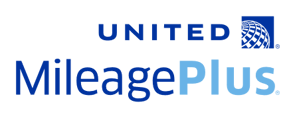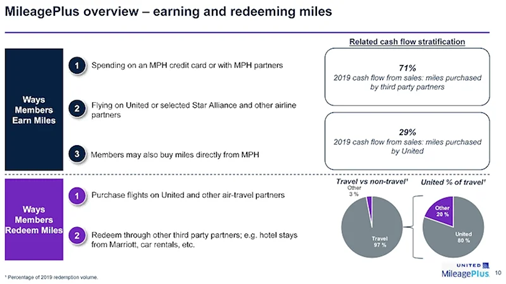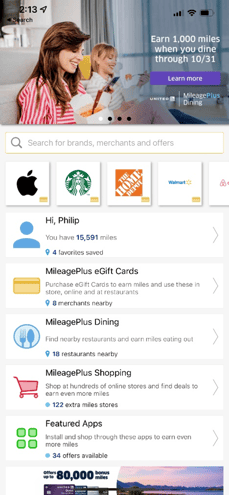Do Tiered Loyalty Programs Work?
Tiered Loyalty Programs can build real loyalty sentiment and boost retention by introducing a switching cost –...
Loyalty program partnerships can dramatically increase the relevance and appeal of loyalty programs for any participant brand, particularly those with infrequent purchases or smaller customer bases. For the anchor/sponsor brand, it can help expand your reach into new segments or markets. In either case, tapping into the right kind of loyalty partnerships is beneficial for two reasons: you attract more high potential customers to your brand, while also expanding relationships with your existing customers. With the advent of technology solutions and open API’s, connecting with loyalty partners is easier and more cost efficient than ever. In terms of best practices, United Airline’s MileagePlus program provides a comprehensive example of loyalty partnership design.

United Mileage Plus offers a strong partner ecosystem, with numerous avenues to both earn and redeem points. This provides lots of opportunities for complimentary partners both large and small to create effective promotions.
By the numbers: United MileagePlus has over 100 million members. 50%+ of United’s flight revenue is from MileagePlus members. The program generates nearly $2 billion EBITDA, which represents more than ¼ of United’s total adjusted EBITDA.

Source: One Mile at a Time
The partner network is massive, and includes 11,000 restaurants, over 30,000 hotels, and overall 71% of the MileagePlus cash flow comes from the sale of miles to third party partners. Only 29% of the cash flow comes from the sale of miles to United. The vast majority of United Miles are redeemed for air travel on United. So in essence, the focus is on generating profitable partnerships that will ultimately fill United Airlines seats at good fares.
There are four main types of partners to consider: Same Industry, Related Purchases, Related Audiences and Financial Partners.
Airline Alliances have come to dominate the industry, with three major groups. United is part of the Star Alliance, representing over two dozen airlines globally including Air Canada, Lufthansa, and Singapore Airlines to name a few. Because these partnerships are designed to pair geographically non-competing airlines, they are happy to accept miles across the system, which greatly expands both earning and redemption options.
 Finding “Same Industry” partners that offer similar products/services but that pose little competition can be immediately relevant to the members since they’ve already demonstrated a need. Certainly geography is one way to do it, as in the case of the airlines, but there are others as well. Mall based loyalty programs group together a number of retailers with the notion that the loyalty program will attract more customers back to the mall, which will benefit all retailers.
Finding “Same Industry” partners that offer similar products/services but that pose little competition can be immediately relevant to the members since they’ve already demonstrated a need. Certainly geography is one way to do it, as in the case of the airlines, but there are others as well. Mall based loyalty programs group together a number of retailers with the notion that the loyalty program will attract more customers back to the mall, which will benefit all retailers.
End to End Partnerships are also immediately relevant to members, because taken together they fulfill a need you might not be able to otherwise. It’s easy enough to envision all of the partners that might be needed to complete a trip. You’d want to partner up with hotel companies (United has 30,000 participating hotels), home rental (United has VRBO) and car rental companies for starters. If you are more interested in Uber, United offers a way to earn points that way as well by purchasing digital gift cards in advance and adding them to your Uber account.
 Hotel loyalty partners are an important piece, and United has a preferred partnership with Marriott Bonvoy offering more points, more miles and Marriott Bonvoy Gold Elite status for those who qualify. Marriott members can exchange Bonvoy points for United Miles, and vice versa though there are some tier qualification limits.
Hotel loyalty partners are an important piece, and United has a preferred partnership with Marriott Bonvoy offering more points, more miles and Marriott Bonvoy Gold Elite status for those who qualify. Marriott members can exchange Bonvoy points for United Miles, and vice versa though there are some tier qualification limits.
United Cruises is yet another travel related way to earn mileage, up to 45,000 miles, or members can also redeem for cruises.
Nearly every loyalty program has an affinity card, which makes for a saturated and highly competitive marketplace where adoption is typically limited to the more loyal customers, though it can contribute greatly for moderate users to earn significant points. For United, Chase offers several different types of Mileage Plus affinity cards, with varying fee and earning structures to appeal to different types of users. United offers additional ways to earn miles, including through Rocketloans.

In addition, there are non-affiliated travel cards like Chase Saphire and Marriott Bonvoy that can be redeemed directly for United Miles, or Amex Membership Rewards points that can be redeemed for miles with a Star Alliance Partner and also used for free travel on United. The benefits for program sponsors can be significant – these institutions will pay lavishly for access to a loyal customer base. This type of partnership can also facilitate excellent benefits for the members while also generating cash to fund overall program operations
United offers a few different ways to earn miles by shopping at 1,100 different online and brick/mortar retailers including major brands like Apple, Kohl’s, CVS, Home Depot, Macy’s and many more. It’s a traditional affiliate model, with some retailers offering larger bonuses per dollar spent, ranging anywhere from a base of 1 up to 10 miles per dollar spent. In addition to shopping online, many of the retailers offer mileage credit for in-store purchases as well through linked payment cards (ie members register their cards then automatically receive credit).
 The United Dining program offers an additional way to earn United Miles at any of the 11,000 participating restaurants. This program uses the linked card approach to tracking purchases, and offers differing points based on your tier (base members earn .5 miles per dollar spent while VIP members earn 10X that at 5 miles per dollar). Both the shopping and dining programs are pulled together nicely in the mileageplus X app, with an ability to filter for nearby options.
The United Dining program offers an additional way to earn United Miles at any of the 11,000 participating restaurants. This program uses the linked card approach to tracking purchases, and offers differing points based on your tier (base members earn .5 miles per dollar spent while VIP members earn 10X that at 5 miles per dollar). Both the shopping and dining programs are pulled together nicely in the mileageplus X app, with an ability to filter for nearby options.
United says that there are 155K members participating in the shopping portion of the program, which put’s it at well under 1% of their 100M members. This highlights the challenge of untargeted affiliate style partnerships, which are generally used extensively by a very small portion of the membership. While these programs may not move the needle much for United, it can for the individual partner, depending on the fit with the target audience. If there is a good deal of overlap, promoting the partnership at point of sale will help remind shoppers to use the benefit, and provide a meaningful differentiator in the local market.
Tiered Loyalty Programs can build real loyalty sentiment and boost retention by introducing a switching cost –...
Subscription is a new frontier in loyalty programs that’s been carved out so famously by Amazon Prime. However,...
Comments